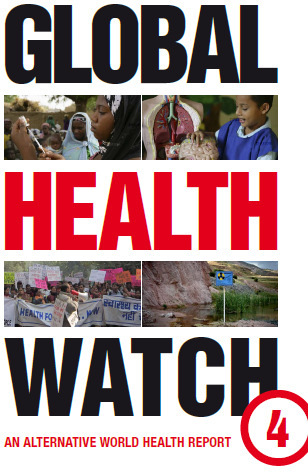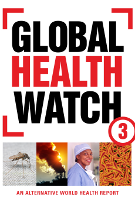Programme Budget 2014-15
Programme Budget 2014-15
In previous budget cycles WHO has prepared three main planning documents: the (five year) Global Program of Work (GPW), the Medium Term Strategic Plan (MTSP) and the (two year) Programme Budget (PB). As part of the WHO Reforms of 2011-12 it was decided to drop the MTSP and work solely with the GPW and PB. This page is focused on the Programme Budget for 2014-15. See also WHO Watch's introduction to and commentary on the GPW12.
PB14-15 for regional committee consultation
In early August 2012 the version of the draft PB14-15 for consultation with regional committees (RCs) was posted on the WHO website. The RCs meet from August to October. Their comment will be available for consideration at the Extraordinary Meeting of the Programme, Budget and Administration Committee (PBAC) of the Executive Board (EB) scheduled for Dec 6-7, 2012 and will be considered again at the 132nd EB in January, 2013. EB132 will adopt a revised version of the PB14-15 for consultation with donors to see how much and what they will be willing to fund (the so called 'funding dialogue'). A further revision of the PB will be adopted by the 66th World Health Assembly (WHA66) in May 2013
The draft PB14-15 incorporates: an introduction, six chapters (dealing in each case with one of the proposed 'categories') and an annex which provides a broad picture of current resource allocation, mapped to the six proposed categories.
Introduction. The introduction starts by locating the PB in the context of WHO reform, promises (for future drafts) an overview of the global context, and introduces the categories, priorities and criteria around which this PB has been developed and introduces the proposed 'results chain'. The results chain works up from inputs, activities, outputs and outcomes to impacts. Inputs, activities and outputs are what the Secretariat is responsible for. Outcomes and impacts are a shared responsibility, shared in unknowable proportions with MS, various partners and other stakeholders.
The three main impact categories (healthy life expectancy, universal health coverage, reducing mortality, morbidity and disease) are introduced and a set of proposed impact indicators are presented.
The main outcome categories are then introduced (reduction of risk, access to services, strong health systems and resilient societies) but no indicators are presented. However, in the succeeding chapters indicators for outcomes are presented in relation to each of the selected priorities.
Confusion between indicators and targets. In many cases the proposed indicators are presented as targets (with varying provenance). There seems to be no logic for complicating the results chain at this stage with targets, particularly setting targets for impacts which are supposedly co-produced with other agencies (who may not have been party to the setting of these targets). Target setting is seen by some as a strategy for coordination and drive. However, target setting is not discussed in the accompanying narrative, certainly it is not evaluated as a strategy for coordination and drive. See WW comments on performance measurement under GPW12.
Structure of category chapters. The next six chapters focus seriatim on the six categories. The first five of these categories are presented in a standard format:
- Priorities and rationale (for selecting these priorities);
- Challenges (to be overcome in addressing these priorities)
- Strategic approaches (cast in relation to this group of priorities);
- Linkages (between this category and the purposes of other categories and priorities);
- Outcomes (what will be achieved by the range of different agents working in this field);
- Outputs (what will be produced, achieved, created by the WhO Secretariat, listed separately for each of the priority areas within this category).
Structure of document. This presentation structure is seriously clunky. Aggregating all priorities into one group for the purposes of discussing 'challenges, 'strategic approaches' and 'linkages' does not make sense. Many of the priorities within each category confront different challenge, call for different strategies and have very different linkages. The challenges, strategic approaches and linkages for malaria are different from those for TB. The discussion of challenges, strategy and linkages need to be disaggregated and relocated in the hierarchy to focus on the specifics of each 'priority'.
Lack of structures or processes to ensure intersilo collaboration across 'linkages' and to ensure full integration of 'cross-cutting issues' in the work of the silos. This homogenisation approach to the structure of the document is of particular importance with respect to linkages. For example there is no reference to SDH under the 'category' NCDs nor under the priority NCDs nor under nutrition. It seems that the idea of linkages and strategies for driving the cross-cutting issues have not been fully integrated into the structure and logic of this document. In a sense it has been explicitly postponed to the next biennium as indicated by the 'output' listed under the 'priority' Leadership in health: 'oversight mechanism(s) of mainstreaming issues such as gender, human rights and social determinants in place and functional'. This is not very encouraging.
Category 1: Communicable diseases.
- HIV/AIDS
- TB
- Malaria
- Neglected tropical diseases
- Vaccine preventable diseases
More detailed comment presently under development.
Category 2: Noncommunicable diseases
This category is particularly confused because the term 'noncommunicable diseases' is used as the label for the 'category' and for the 'priority'.
- Noncommunicable disease
- Mental health
- Violence and injuries
- Disability and rehabilitation
- Nutrition
More detailed comment under development. See WW comments on Mental Health and Disability under our comments on GPW12.
Category 3: Promoting health throughout the life-course
- Maternal and newborn health
- Adolescent and reproductive health
- Child health
- Women's health
- Healthy ageing
- Social determinants of health
- Health and the environment
- Gender and human rights mainstreaming
More detailed comment under development.
Category 4: Health systems
- National health policies, strategies and plans
- Integrated people-centred health services
- Regulation [of] and access to medical products
More detailed comment under development.
Category 5: Preparedness, surveillance and response
- Alert and response capacities
- Emergency risk and crisis management
- Epidemic- and pandemic-prone diseases
- Food safety
- Polio eradication
More detailed comment under development.
Category 6: Corporate services / enabling functions
- Leadership in health
- Country focus
- Governance and convening
- Strategic policy, planning, resource coordination and reporting
- Strategic communications
- Knowledge management
- Accountability and risk management
- Management and administration
More detailed comment under development. See See WW comments on the accountability of member states under our comments on GPW12. This might be something which could be accommodated under Leadership in health.
We note that performance indicators for this category are under development. See our comments on the need for a more rigorous approach to performance measurement under our comments on GPW12.
- Login to post comments




